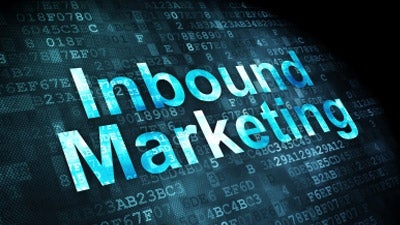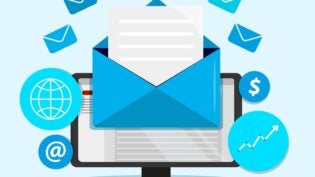
The business world is always trying to figure out how to use process to create scale. Makes sense, right? With good process comes scale, and with scale comes higher profitability. The same holds true in marketing. Properly deployed inbound marketing requires many different things to happen. Forgetting just one can ruin the whole campaign.
Strategically, most marketers understand what inbound marketing is, but many still fail to deploy it with much efficiency or process. Below are the seven steps that must occur in order to create scale and to maximize inbound marketing opportunity.
1. The Offer
When it comes to inbound marketing, everything starts with the offer. However, not all offers are created equal. Most offers should be geared more towards top-of-the-funnel visitors who probably don’t know much about the business whose website they just visited.
These are the folks looking for information to help solve their own problems and represent the vast majority of most companies’ website visitors. Top-of-the-funnel offers can include free whitepapers, ebooks, guides, videos and checklists.
Middle-of-the-funnel website visitors are likely people who are already familiar with the brand. They represent a small contingent of traffic on most websites. They’ve likely downloaded top of the funnel offers in the past and have some level of trust or perceived value in the branded content. Middle of the funnel offers can include webinars, case studies, free samples, catalogs, FAQ sheets, brochures, etc.
Bottom-of-the-funnel visitors are the smallest group of visitors on most websites. These are people searching for who will solve their problem. This group is looking for free trials, demos, assessments, consultations, estimates and coupon offers.
2. Landing pages and CTAs
The offer represents a brand’s currency in the inbound marketing quid pro quo transaction. The call-to-action (CTA) and the landing page are a website’s checkout lane and cash register, respectively. Website visitors who convert do so by paying with their names, email addresses and whatever other form field information a brand includes on its landing page.
Without CTAs, website visitors will struggle to find a brand’s landing pages. Without landing page conversions, an inbound marketing campaign will struggle to show a return and proper nurturing will be impossible.
3. Lead nurturing
After a visitor converts on a landing page, they are now ready to be nurtured by receiving a series of emails that deliver prudent content over time. This automated marketing exercise should roughly mirror a typical sales cycle.
Lead nurturing can be deployed using many different channels. However, this example is for email lead nurturing only. Many of the same principles hold true across other channels. Lead nurturing empowers marketers to deliver the proper content to the appropriate person at the best time.
Marketers who master lead nurturing generate 50 percent more sales ready leads and do it at a 33 percent lower cost.
4. Email
The difference between the lead nurturing step and the email step is automation. In this step, marketers need to turn their attention towards their current contacts database. Upon the launch of a new offer, marketers should segment their email database with just the contacts they feel would appreciate receiving the offer. Open, click-through and conversion rates are much higher this way.
5. Earned and owned blogging
Most marketers are very familiar with owned blogging. It’s as simple as writing an article and publishing it on the brand’s blog. However, earned media has traditionally resided in the PR arena.
After a new offer is published behind a landing page, marketers should publish blog content that closely aligns with the topic of the offer. This makes click-throughs on the CTA and conversions on the landing page much more palatable for readers.
After that, marketers should put their PR hat on and reach out to other bloggers and journalists to see if they can guest post or get media coverage for the content represented in the offer.
6. Social media
This is perhaps the simplest of all seven steps. Promote the earned and owned articles as well as the offers themselves as part of the brand’s normal broadcast, sharing and engagement activities on social media. It’s important not to overdo it, however. Marketers should have a clear understanding of what’s acceptable and what’s taboo in the online communities they manage.
7. Analyze and adjust
Like all good processes, analysis and adjustment should occur regularly in order to make sure each step is optimized and working properly. This process also helps create fertile ground for testing which goes a long way in maximizing and taking advantage of online opportunity. While the individual contributors to each step of the process should analyze and adjust the steps they’re responsible for, ultimately, the campaign in its entirety is the responsibility of the department head.
The great thing about the inbound marketing campaign process is that it’s easily supported and executed with the right people and software in place. When the machine is fully operational, increasing output (traffic and conversions) is simply a matter of creating more offers. Marketers will realize scale if they deploy the entire inbound marketing campaign process as described.
This article was originally published by Relevance.com
Published: December 13, 2013
2068 Views
2068 Views












